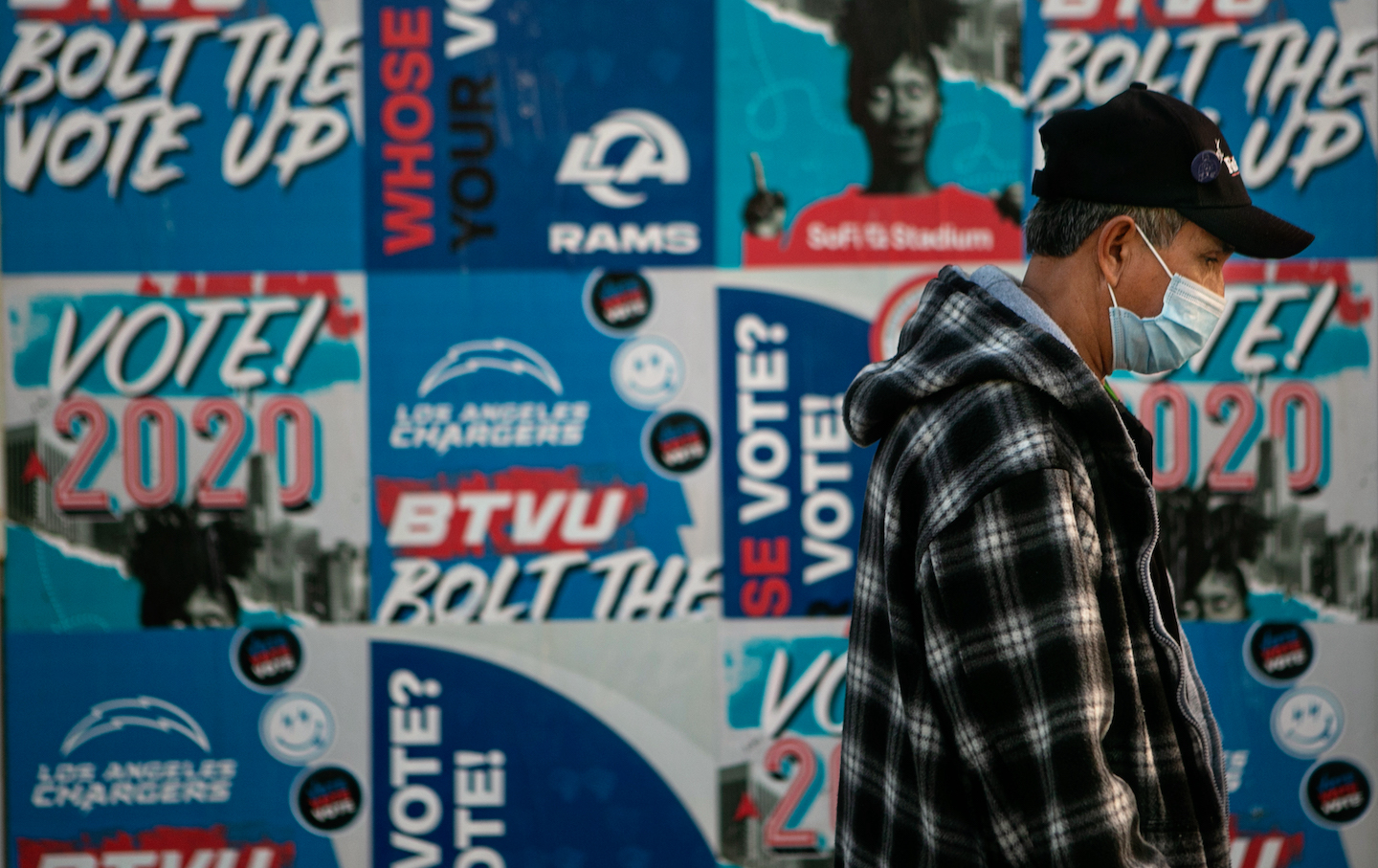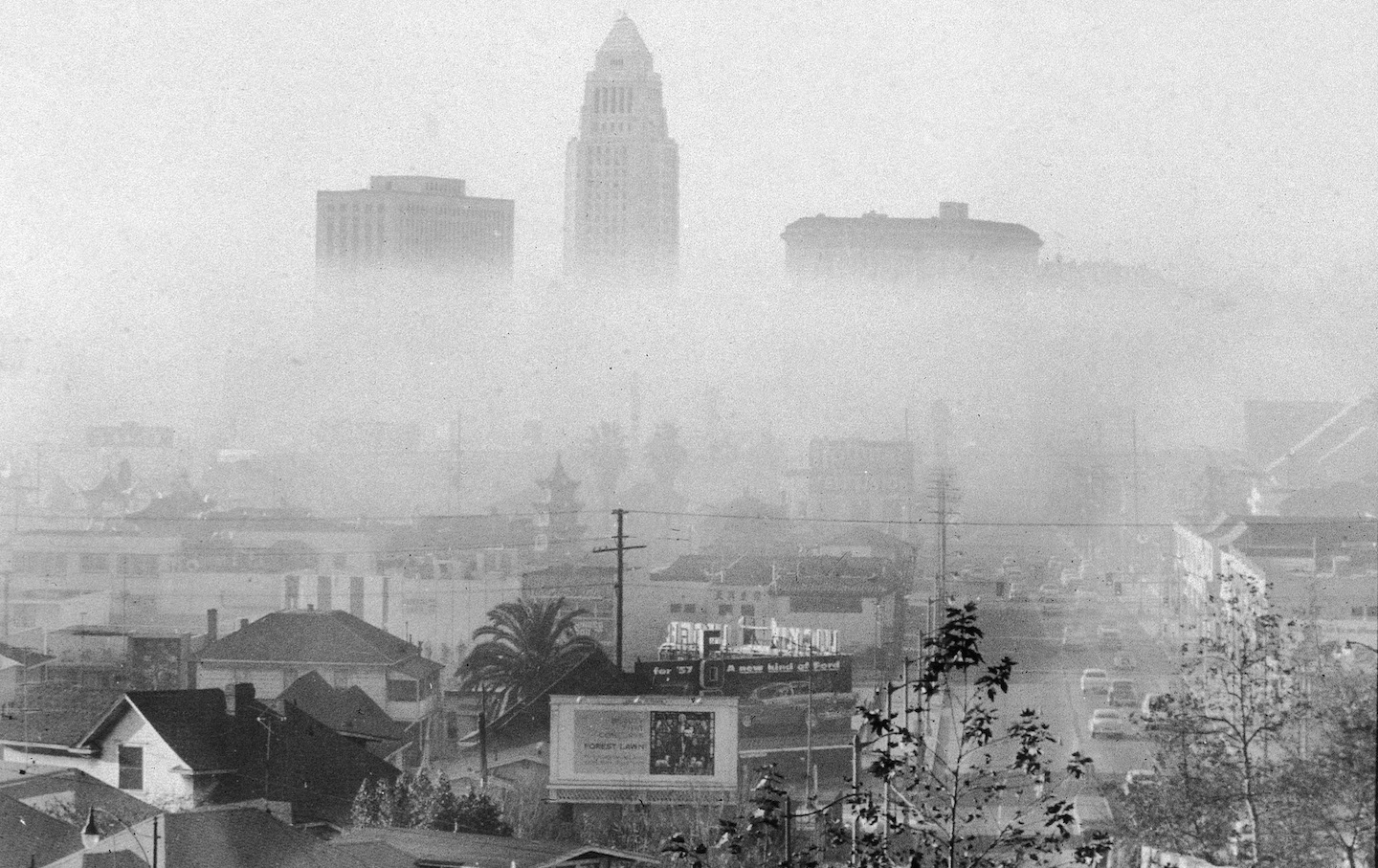● NEWS ● #NBC #LosAngeles ☞ Woman mistakenly jailed for 13 days sues Los Angeles, police department https://www.nbcnews.com/news/us-news/woman-mistakenly-jailed-13-days-sues-los-angeles-police-department-rcna17361
#losangeles
SoFi Stadium in Los Angeles set to host Superbowl LVI


Architecture studio HKS has designed SoFi Stadium in Los Angeles, which is set to host this year's Super Bowl, as the home of American football teams the LA Chargers and LA Rams.
Built in the Inglewood area of Los Angeles, the stadium will host LA Rams when they play Cincinnati Bengals in Superbowl LVI on Sunday 13 February.
 The recently opened SoFi Stadium will host Superbowl LVI
The recently opened SoFi Stadium will host Superbowl LVI
Completed in 2020 at a cost of $5.5 billion, the 70,000-capacity venue – which will be expanded to seat 100,000 for the Superbowl – is the most expensive stadium ever built.
It was designed by HKS for LA Rams-owner Stan Kroenke's development company Kroenke Sports & Entertainment to be an "entertainment destination".
 It is topped with a large curved roof
It is topped with a large curved roof
"Mr Kroenke asked us to do two things: create an entertainment destination in the entertainment capital of the world, and architecture that embodied the spirit of southern California," said Lance Evans, director of sports at HKS.
"Our design team took that to heart; it led every decision on this building," he told Dezeen.
 The roof covers the stadium, music venue and plaza
The roof covers the stadium, music venue and plaza
The stadium, along with a neighbouring 6,000-seat music venue and connecting plaza, was covered by a large roof that has the form of a "coastal wave".
"It's not just a stadium," explained Evans. "In fact, the 6,000-seat YouTube Theater and 2.5-acre American Airlines Plaza are also under that one massive, swooping roof, which also protects the NFL's largest stadium."
 It is structurally separate from the stadium
It is structurally separate from the stadium
Described by the studio as the NFL's "first indoor-outdoor stadium", the transparent roof was designed to give the venue the feel of an outdoor stadium, while being protected from the weather.
Supported on a series of columns, the roof is structurally separate from the seating bowl and made from a single layer of ethylene tetrafluoroethylene (ETFE) covered with a film to protect players and spectators from the sun.
 The roof was designed to give the stadium the feel of an outdoor venue but benefits of an indoor one
The roof was designed to give the stadium the feel of an outdoor venue but benefits of an indoor one
"The roof never touches the stadium walls," explained Evans."It's completely free-standing, hovering above and around the massive venue."
"The roof is open on three sides, which allows for a fantastic ocean breeze to flow through the seating bowl."
 The sunken seating bowl's capacity can be expanded to 100,000
The sunken seating bowl's capacity can be expanded to 100,000
The seating bowl itself was sunk into the ground by around 27 metres to reduce the building's height, due to the proximity of the LAX airport.
A large double-side screen is suspended from the roof to show replays and scores.
[ 
Read:
Super Bowl stadiums of the past, present and future
](https://www.dezeen.com/2018/02/01/super-bowl-stadium-past-present-future/)
"The ETFE roof amplifies sound in the stadium; it's electric when the fans are cheering," said Evans.
"The dual-sided videoboard technology is another key. As you enter it's at eye level. Everyone in the stadium can see and engage with the technology; there's no bad seat in the house."
 A screen was hung from the roof
A screen was hung from the roof
The stadium complex was built as the first stage of a 300-acre entertainment district called Hollywood Park, which will contain a hotel, shops and 3,000 homes.
It is set in a series of gardens, plazas and lakes designed by San Francisco-based Studio-MLA.
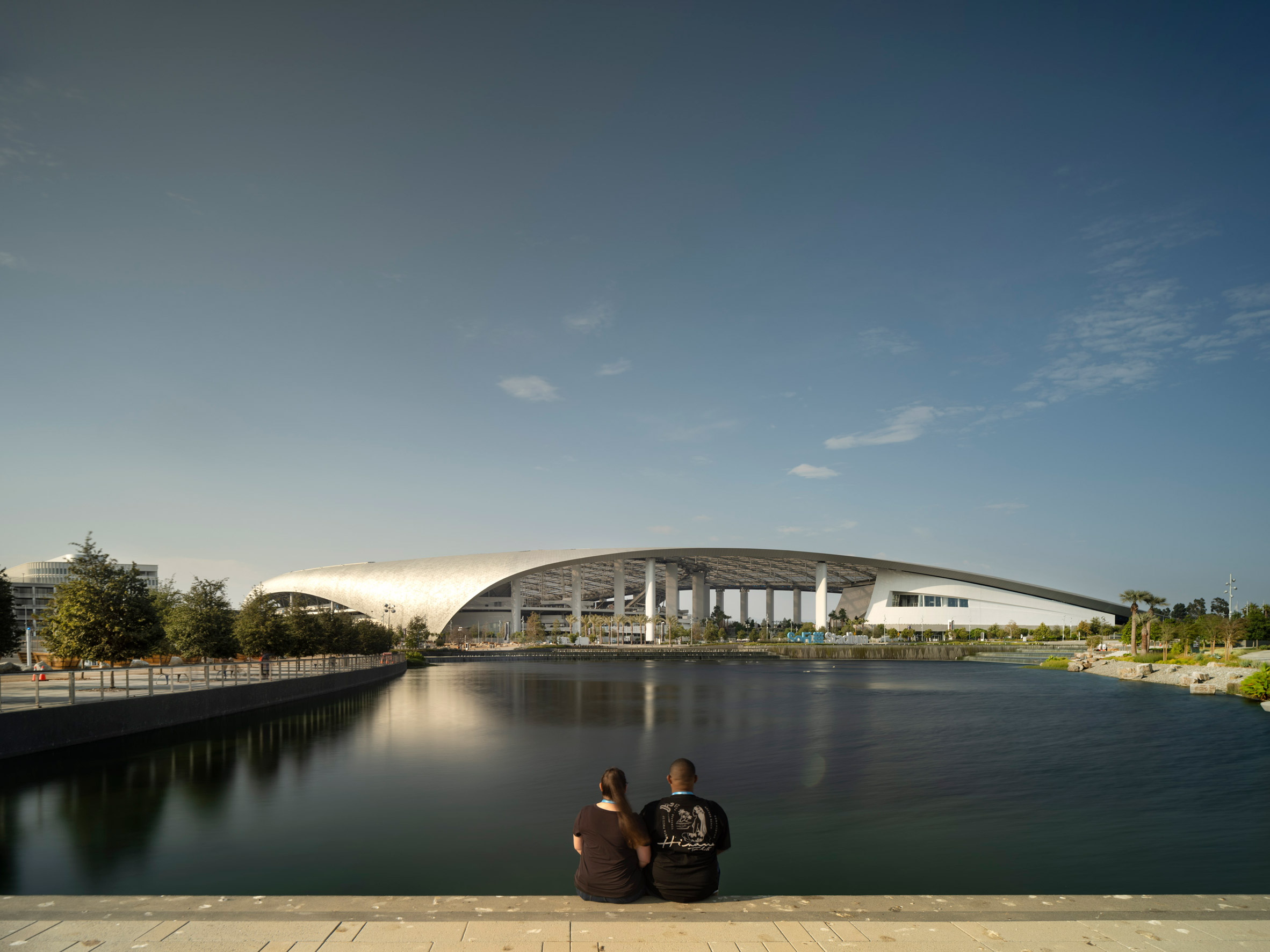 Landscaping around the venue was designed by Studio-MLA
Landscaping around the venue was designed by Studio-MLA
Overall, Evans hopes that the venue will set a new standard for stadium design and change fans' perceptions of watching sports live.
"We hope that when fans walk in for the first time, they have a sense of wonder and excitement," said Evans.
"We want to change what fans think about an NFL stadium. We wanted to immerse fans in the overall game-day experience – to hear, see and feel the energy, from the lower bowl to the highest seats in the stadium."
 The stadium was designed to improve fan experiences of live sport
The stadium was designed to improve fan experiences of live sport
SoFi Stadium is the latest stadium featured on Dezeen to host a Superbowl, which is the culmination of the National Football League (NFL) season.
In 2020 the Superbowl was hosted by the Hard Rock stadium in Miami Gardens, while the 2019 match took place in the HOK-designed Mercedes-Benz Stadium in Atlanta.
The photography is by Nic Lexhoux.
Dezeen is on WeChat!
Click here to read the Chinese version of this article on Dezeen's official WeChat account, where we publish daily architecture and design news and projects in Simplified Chinese.
The post SoFi Stadium in Los Angeles set to host Superbowl LVI appeared first on Dezeen.
#all #architecture #publicandleisure #highlights #losangeles #sports #stadiums #americanfootball #superbowl
#Pilot from #CrashedPlane in #US pulled to safety moments before #train hit | #LosAngeles | The Guardian
This man was doubly lucky.
8 Likes
7 Comments
Rapper Drakeo the Ruler bei Musikfestival getötet | DW | 20.12.2021
Der US-amerikanische Künstler starb nach einer Messerstecherei hinter der Bühne. Er ist nicht der einzige Rapper, der in den letzten Jahren getötet wurde.#Rapper #RapperDrakeotheRuler #YoungDolph #LosAngeles #USA #Waffen #Messerstecherei #Festival
Rapper Drakeo the Ruler bei Musikfestival getötet | DW | 20.12.2021
6 Likes
Bunch Design adds colourful granny flat to a home in Los Angeles


American practice Bunch Design has completed a colourful granny flat modelled on an oversized suit at the back of a home in Los Angeles, with sliding doors that enable it to become a single open space.
Accessory Dwelling Units (ADUs), commonly known as "granny flats", were enabled by a 2016 change in state law to tackle California's housing shortage, and the local studio wanted to challenge the expectation of these buildings as something deferential to a main house.
 The SMS ADU was built behind a house in LA
The SMS ADU was built behind a house in LA
The 72-square-metre building, which has been shortlisted in the small interior category of Dezeen Awards 2021, was designed to create a bright and breezy alternative to the client's dark and compartmentalised existing home.
The concept by Bunch Design drew on an unusual reference: the huge, oversized suit worn by Talking Heads frontman David Byrne in the 1984 movie Stop Making Sense. This lends the project its name of SMS ADU or Stop Making Sense Accessory Dwelling Unit.
 Bunch Design added sliding doors to separate areas inside the dwelling
Bunch Design added sliding doors to separate areas inside the dwelling
For the structure, the wide shoulder pads of Byrne's suit that caused it to hang from his body become a series of oversized triangular rafters from which the rest of the home "hangs". These features are emphasised by clerestory windows that angle outwards like broad shoulders.
"Byrne comically and awkwardly creates an inflated body mass around his skinny body," said the studio.
"We did not want the walls to limit the house or feel like tight clothes around a body. Instead, we wanted to create a sense of lift and expansion, like loose and comfortable clothes, dissolving barriers between indoor/indoor and indoor/outdoor."
 The building has triangular rafters
The building has triangular rafters
The home is split into four roughly equal sections: a double bedroom; a kitchen and bathroom; an entrance hall; and a study. Each is separated by blue doors that slide along the triangular wooden rafters.
Coloured areas such as blue and red walls in the bedroom, green kitchen cabinets, pale blue bathroom tiles and a peach-coloured wall in the study demarcate each of these spaces.
[ 
Read:
SO-IL designs prefabricated backyard home for Los Angeles
](https://www.dezeen.com/2021/03/18/so-il-pebble-house-adu-los-angeles/)
"The simple colour selection adds an almost toy-like, colour-coded space which keeps the house from feeling too singular," the studio explained.
The angled clerestory windows beneath the roof, as well as voids in the centre of the triangular frame that are glazed at either end, bring large amounts of light into the home
 Pale blue tiles cover the bathroom walls and floor
Pale blue tiles cover the bathroom walls and floor
"Standard clerestory windows were installed at an angle to break the common notion of 'wall meets ceiling', with unexpected reflections of the landscape and trees on the tilted glass," the studio explained.
This bright and dynamic interior is contrasted by a simple pale exterior clad in wooden planks, with yellow window frames alluding to the colourful spaces inside.
 Colourful spaces define the ADU
Colourful spaces define the ADU
In 2019, the Los Angeles Design Festival highlighted a range of architect-designed granny flats, including a previous ADU by Bunch Design built for the studio's founders, Bo and Hisako, in LA's Highland Park neighbourhood.
The post Bunch Design adds colourful granny flat to a home in Los Angeles appeared first on Dezeen.
#residential #all #interiors #instagram #usa #losangeles #california #houses #californianhouses #colour #accessorydwellingunits
1 Shares
The Story Behind Los Angeles’s Rare Lightning Storm Photos
![]()
![]()
My name is Emeric Le Bars and this is the story of how I captured some insane, extremely rare photos of a lightning storm in Los Angeles, without really planning anything.
You don’t need to be familiar with Los Angeles to know that the city has an average of 300 sunny days every single year, which makes it one of the sunniest locations in the country and eventually the world. Even though the city usually gets very dry summers, rainy days do happen between the months of December and March. Additionally, lightning storms are historically quite rare in the region. But this year, it was different…
On October 4, 2021, Los Angeles experienced an insane thunderstorm that even a 50-year-old inhabitant born and raised in the area told me had never seen before. Southern California, including Los Angeles, was hit by over 4,000 lightning strikes in a 24-hour time frame. Even if this happened in Florida, a state that experiences year-long thunderstorms, that’s a lot of lightning in such a short period of time.
![]()
It was probably not the safest time to go out and shoot, I should tell you. But what’s crazy about my story is that nothing was really planned. I was light-years away from thinking that a storm like this could happen in early October in Los Angeles. Two days prior, it was still 90-degrees out!
I went out shooting only because one of my friends, Craig who was visiting from Chicago, had a few hours to spare before his flight back. Since he was staying in Los Feliz, I suggested we go to Griffith Park nearby because it offers amazing high vantage points of the downtown Los Angeles skyline, Hollywood, the Griffith Observatory, and many other iconic locations when the weather is clear.
![]()
This also happened to be the day Facebook and Instagram were down for several hours and the only way to get in touch with him was through Instagram messages; I did not have his number saved in my phone. Around 3 PM, when the app slowly started to work again, I received his message saying he was ready to go at any time. Sunset was only three hours from then, so we had no time to waste.
As I was driving from my apartment to Los Feliz to pick him up, I started seeing some very scary-looking dark clouds approaching from the south. Once I reached his location, I decided to check the radar and noticed that some heavy rain and lightning was coming towards us. Going to Griffith Park, which is mostly hills and required hiking suddenly became a bad idea. So, we decided to go grab a beer in a local bar while we waited for the storm to pass.
![]()
Between Instagram being down and the storm approaching, it felt as though everything was against us that day.
After 30 minutes of enjoying a cold one and catching up, the rain calmed down a bit and we decided to drive to the entrance of the park. That said, it was still raining a lot and the constant lightning definitely did not make us want to go hiking and so we decided to wait another 20 minutes in the car. We didn’t want to give up as we could clearly see that the storm would pass fairly quickly; looking South, the sky was mostly blue. At that time, it was only half an hour before sunset and I did not want to miss the good colors if there were any. Speaking from my experience from the last nine years shooting timelapses, after-storm sunsets can be very, very colorful. I did not want to miss it!
And I am glad we didn’t give up.
![]()
Even though we didn’t get a colorful sunset, I came back with some of my favorite photos I have ever captured.
We started hiking to our spot in Griffith Park when the rain stopped. Our goal was to capture the downtown Los Angeles skyline at sunset, but once we reached our spot, we noticed some crazy huge lightning strikes to the West, right above the ocean. We could clearly see the Century City skyline and the Griffith Observatory. The visibility was really clear with all the rain and wind from the past couple of hours, so we decided to change our plans and capture this view instead of Downtown Los Angeles, where nothing was really happening.
![]()
I want to explain that I know nothing about capturing thunderstorms and lightning. I specialize in timelapse photography, mostly city skylines and other cityscape subjects, and have only shot one or two storms like this in the past.
The only detail I was aware of to capture a great timelapse of a thunderstorm is to reduce the amount of time between each photo as much as possible. This technique will raise the chances of capturing a lightning bolt since the “dark time” is reduced to the minimum.
![]()
After setting up my camera, composition, and settings, I decided to shoot a first timelapse with a 2.5-second shutter speed and three-second interval. This will give me only half a second of delay between each photo. Luckily for me, I did not miss a single lightning strike during the 15-minute timelapse.
The park was mostly empty because of the weather, and we were the only two around aside from a few hikers we saw in the two hours we were shooting up there.
As time passed, the storm started to get even bigger. I changed location, only 100 feet away, and tried timelapsing the downtown LA skyline, but wasn't happy with that since nothing was happening in that direction. We had to leave soon as my friend Craig had a flight to catch in a few hours, but agreed to try one more timelapse.
![]()
“Once last one,” we said.
And I am glad we did.
The storm had moved just behind the Griffith Observatory. It seemed closer and bigger than when we started, yet it was super clear right above us.
I started shooting a last timelapse aimed at the Observatory when we witnessed the biggest lightning strikes of our entire lives -- I am not exaggerating. The fact that this was happening right there, right then in a city known for its dry and hot weather all year long, was just out of this world.
Since we were over an hour after the sunset, it was really dark around us and I had to use different settings. I went with a five-second shutter speed and a six-second interval. One second between each shot is not much, and even then I did miss a few strikes. Eventually, I did capture a few that turned out to be some amazing photos of the Observatory.
![]()
Since I was shooting a timelapse, I could not look at the photos directly, but I knew I captured some unique shots. We were both super excited and could not believe it!
The timelapses in video form are actually not that exciting since the lightning bolts happen on one single frame -- It’s just too fast! But I am okay with this and am just really happy about the stills I got.
What was supposed to be a fun timelapse session with a friend turned out to be the most exciting shoots of the last 10 years. Besides the location, nothing was planned at all and we even had to change our plan a few times. Even at 3 PM, I didn’t even know if we were still going out or not since I couldn't communicate with my friend Craig.
This story was a way to remind you that sometimes, just going out at the last minute can turn out to be the best session of your life! I tend to overthink everything before going out shooting: Are the clouds moving in the right direction? Are those low, medium, or high clouds? Should I go to this spot or to that one? Where do I park? It’s always impossible to fully predict the outcome and sometimes what you expect never happens, but something better might take its place.
Of course, planning is always good and often safer, but some of my favorite timelapse videos and photos ever captured were actually not really planned. This was the case for my SpaceX Falcon 9 timelapse from October 2018, or La Tuna fire in September 2017 (and countless amazing sunsets).
What a crazy session I will not forget anytime soon!
About the author: Emeric Le Bars is a French timelapse photographer who has been based in Los Angeles for the past nine years. He has created over 700 clips of the City of Angels and more than 500 of Atlanta, San Francisco, New York City, Las Vegas, Chicago, Paris, San Diego, Salt Lake City, Denver, Miami, Dallas, Philadelphia, and Montreal, Quebec. His work has been used by multiple companies including Adobe, Facebook, OPPO, Google, Netflix, LG, STARZ, Microsoft, Mastercard, Red Bull, and Nike. Today, he teaches timelapse photography through online classes in both English and French on his website.
#spotlight #travel #emericlebars #historic #landscapephotography #landscapes #lightning #lightningstorm #losangeles #nature #rare #stormphotography #storms #thunderstorm #timelapse #weatherphotography
2 Shares
Tiny home village by Lehrer Architects provides temporary shelter for LA's homeless


Local studio Lehrer Architects has built a community of brightly coloured tiny houses on a narrow strip in Los Angeles for the city's homeless residents.
The Whitsett West Tiny Home Village occupies an oddly shaped stretch of land in North Hollywood, measuring a quarter of a mile long and only 20 feet (six metres) wide in places.
 The Whitsett West Tiny Home Village occupies an oddly shaped site beside LA's 170 freeway
The Whitsett West Tiny Home Village occupies an oddly shaped site beside LA's 170 freeway
The community includes 150 beds in 77 units, as well as hygiene trailers, storage, offices and communal spaces.
Necessary infrastructure like electricity, storm drains, sewers, water, ADA accessibility and drainage are also integrated.
 The village has 77 units that can house up to 150 residents
The village has 77 units that can house up to 150 residents
This is the fourth collaboration of this nature in seven months between Lehrer Architects and the City of Los Angeles, resulting in the creation of transitional housing on disused urban lots, including the Alexandra Park village.
"After completing three successful Tiny Home Villages, each in a very different urban setting, working on this site felt particularly satisfying," said Lehrer Architects partner Nerin Kadribegovic.
"The oddity of its shape, and location forced us to use every tool in our design palette to make this forgotten piece of land bring dignity and joy to its future residents."
 The site has communal areas for eating and socialising
The site has communal areas for eating and socialising
The lockable micro homes, which sleep one or two people, are manufactured by Pallet Shelter and delivered to the site flat and unassembled.
The eight-by-eight-foot (2.4-by-2.4-metre) structures come in white, but have been decorated by Lehrer Architects in bright hues to create a more desirable place to live.
They are arranged in rows facing communal outdoor spaces that are also colourfully patterned in blue, green and yellow.
"A profound joy of these projects is the necessity for – and intensity of – their visual presence," said Lehrer Architects founder Michael B Lehrer. "Every tool in our visual palette was employed starting with perspective, procession, and colour."
 Bright colours were chosen to create a more desirable place to live
Bright colours were chosen to create a more desirable place to live
An eight-foot sound barrier blocks noise from the adjacent freeway and offers residents privacy.
Like the studio's previous tiny home villages, Whitsett West is intended as temporary accommodation for LA's unhoused population, which is estimated to number over 40,000 people.
 The village also incorporates hygiene trailers, storage, offices and other necessary infrastructure
The village also incorporates hygiene trailers, storage, offices and other necessary infrastructure
The city has built eight of these villages so far over the past year, and currently has plans to construct eight more on dilapidated or leftover pieces of land.
Other projects created to rehouse those experiencing homelessness in LA include an apartment complex built from shipping containers and a bright white housing development.
The post Tiny home village by Lehrer Architects provides temporary shelter for LA's homeless appeared first on Dezeen.
#residential #all #architecture #usa #losangeles #california #housing #microhomes #homelesshousing #homelessness #lehrerarchitects
2 Shares
Alternative Los Angeles as seen by the LA Six – in pictures | Culture | The Guardian
Punks, lowriders, gang members and the glittering facade of Los Angeles are on show at an exhibition of documentary and street photographers known as the LA Six. Presenting the outsiders and marginalised of the city, the show at Durden and Ray offers a glimpse into the darker side of LA, and runs until 31 October
One person like that
● NEWS ● #CounterPunch ☞ #LosAngeles County Board of Supervisors Approves Motions to Phase Out #Oil and Gas Drilling https://www.counterpunch.org/2021/09/20/los-angeles-county-board-of-supervisors-approves-motions-to-phase-out-oil-and-gas-drilling/
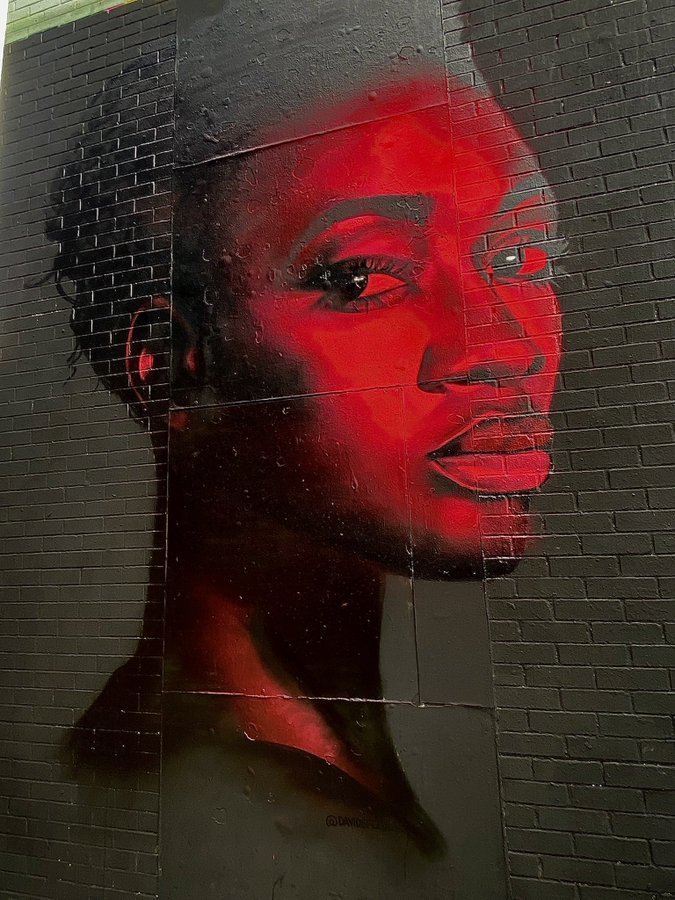
“American Dreamers” a mesmerizing collaboration between #Vhils and #ShepardFairey in #LosAngeles (Photo by Jonathon Furlong)"
9 Likes
4 Comments
2 Shares
Starting to worry about California!
A few reasons: COVID, the recall and impending #Trumpvirus political disaster, and now this.The Texibanification of LA??
LAPD told cops to scrape social media of every person they stop -- even if they're not ticketed or arrested
I raised a few questions about the news org's choice of the word "scraping" in relation to data - I guess in everyday use they're suggesting "investigating", but how? Where? Looking for what? Recording it how? With what Constitutional grounding?
Interesting article, posted on Twitter, with some comments, questions etc. in reaction to the post.
I'm pretty sure many "here" (beyond immediate circles/aspects) will have reactions, on various levels, from varied perspectives.
#LosAngeles #surveillance #LAPD #socialmedia #privacy #rights #scraping #identity
Wow... hope social media had a hand in this....
— Darby Abbott (@DarbysCastle) September 9, 2021
LAPD told cops to scrape social media of every person they stop -- even if they're not ticketed or arrested https://t.co/4IFgoSORyy
3 Likes
2 Comments
● NEWS ● #TheNation #LosAngeles ☞ These Progressive Candidates Want to Transform LA in 2022 https://www.thenation.com/article/politics/these-progressive-candidates-want-to-transform-la-in-2022/
Figure creates pocket park disguised as a building site on LA's Wilshire Boulevard

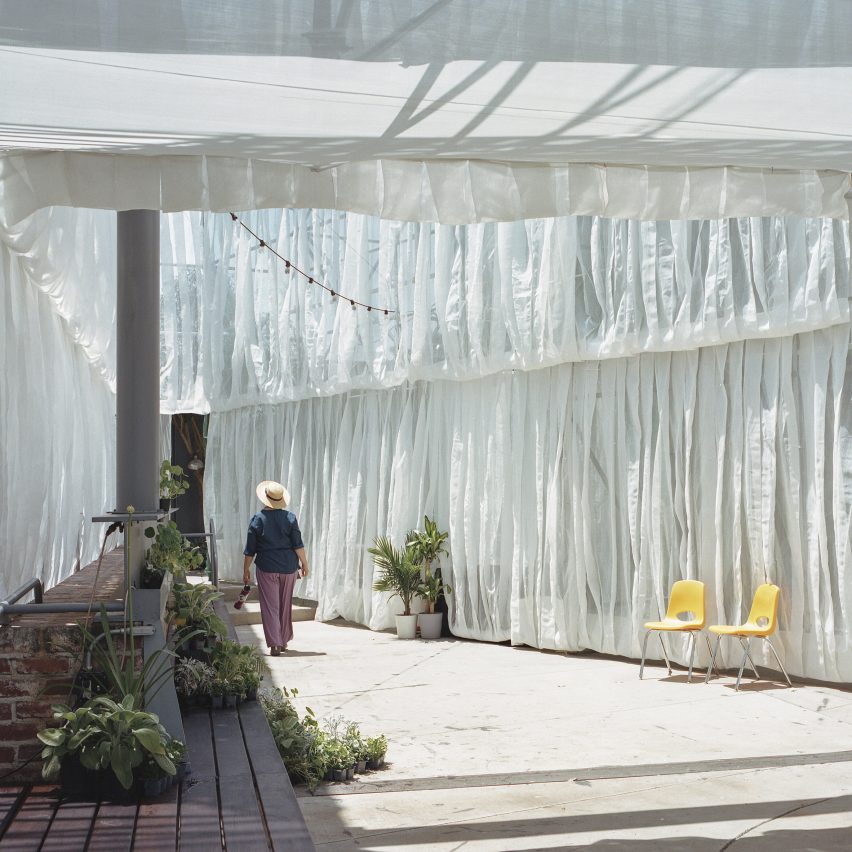
Architecture collective Figure has used the scaffolding and netted fabric typically found on construction sites to create a theatrically shaded courtyard at Craft Contemporary in Los Angeles.
The temporary installation, called Veil Craft, is designed to look just like the many building sites that can be found along Wilshire Boulevard and the surrounding streets.
 Veil Craft is installed in the courtyard of Craft Contemporary in Los Angeles
Veil Craft is installed in the courtyard of Craft Contemporary in Los Angeles
But unlike a development site, this structure invites members of the public to come inside and discover an "unexpected pocket park" where they can sit down, engage in conversation or watch performances.
Here, the construction tarps have been used to create shade and seclusion, rather than as a barrier to prevent entry.
 The installation is made from construction scaffolding and netting
The installation is made from construction scaffolding and netting
"Construction textiles are meant to keep people out – this is a construction site, do not enter, you do not belong here, you're not a part of this," explained Figure's San Francisco-based founders, James Leng and Jennifer Ly.
"So there's a very exclusionary or exclusive type of mentality when it comes to putting up a boundary between the public and something that's in construction," they told Dezeen, "and we thought it would be really interesting to invert that."
 The design replicates the aesthetic of Wilshire Boulevard's many construction sites
The design replicates the aesthetic of Wilshire Boulevard's many construction sites
They've done this by creating a space that is enclosed at the top but open at the base. Green netting forms a blank facade, but instead of extending down to the ground, it folds out to create a canopy.
As you step inside the courtyard, the green is replaced with white. This is pleated to create a veil-like quality, reminiscent of wedding dresses and theatre curtains.
 The netting is pleated to make it feel more like a textile in the home
The netting is pleated to make it feel more like a textile in the home
Seating frames the edge of the space, along with string lights and an assortment of potted plants.
Leng and Ly's intention was to create a space that feels welcoming in a way that a construction site is not, as a way of questioning whether these developments are truly contributing to the quality and liveability of the area.
The pair hope this space will become a place for conversation about the future of LA's urban landscape.
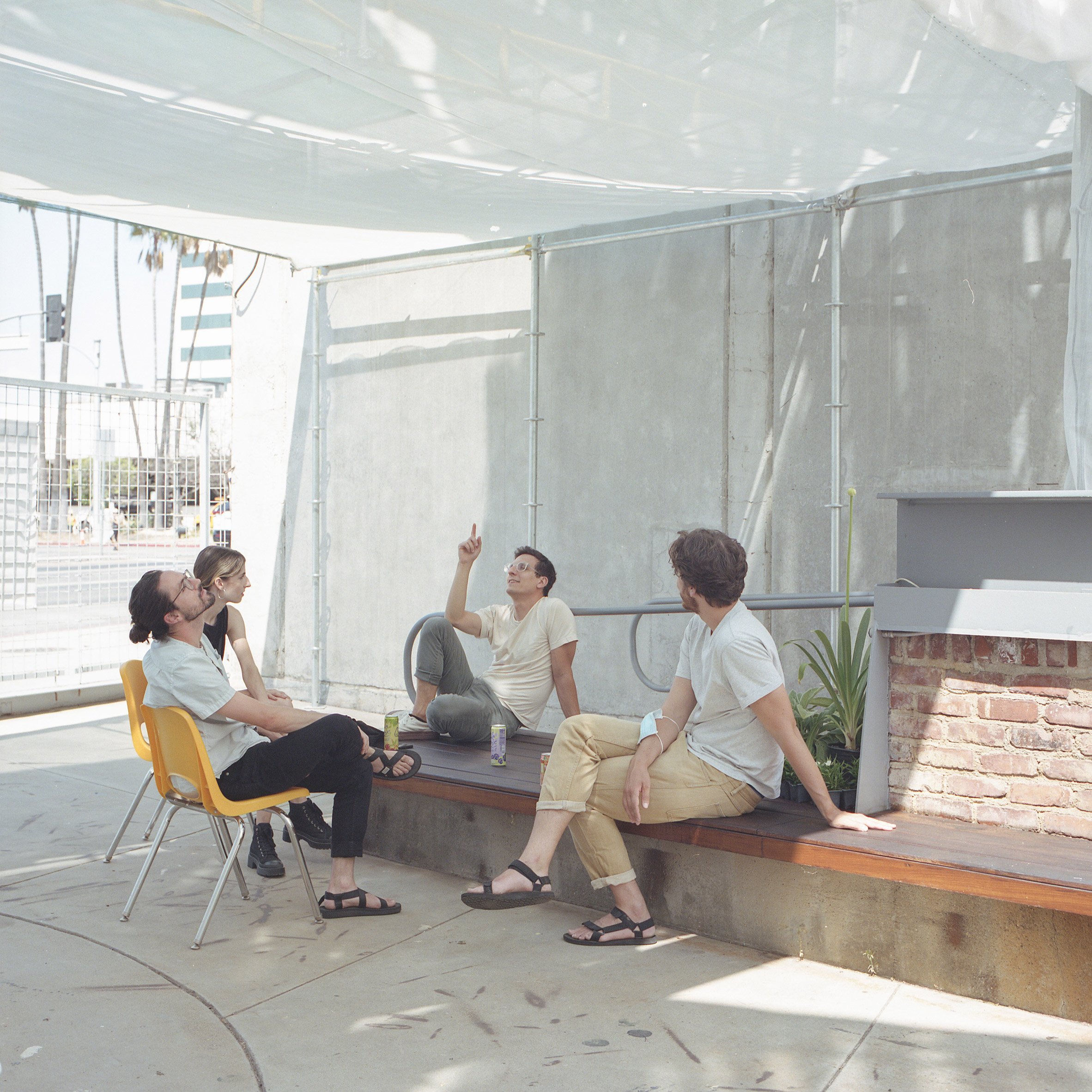 The space will host conversations about the future of LA's urban development
The space will host conversations about the future of LA's urban development
"When you drive down any major boulevard in LA, you just see scaffolding fabric in green, orange or black," they said. "It's an everyday aesthetic of a city that's always in construction, and no one really thinks about it."
"Construction is an essential activity because the city is supposedly building much needed housing or infrastructure," they continued.
"Yet throughout the Covid times we're seeing an increase of displacement and unemployment, and through that poverty and crime. It makes us question who all of this construction and development is going to benefit ultimately, especially because the processes and aesthetics of construction is all about hiding it away from the public."
 The installation was commissioned by Materials & Applications
The installation was commissioned by Materials & Applications
Veil Craft was commissioned by Materials & Applications, a non-profit cultural organisation with a focus on experimental architecture.
The group has been behind many site-specific installations in the city, although this one is the first in a series set to be created in the courtyard of Craft Contemporary, as part of an annual programme.
The installation opened on 17 July and will remain in place until 12 September. It is free to view, and can be found at 5814 Wilshire Boulevard, Los Angeles, CA 90036.
Project credits
Project team: James Leng, Jennifer Ly, Tiger Fu, Oliver Moldow, Reishan McIntosh
CSI Scaffold: Sergio Chiquete Jr
The post Figure creates pocket park disguised as a building site on LA's Wilshire Boulevard appeared first on Dezeen.
#all #installations #design #usa #losangeles #california #scaffolding #materialsapplications

What is happening and how have you been...
#ArthurLee
#Love
#LosAngeles
#1967
#music
#video
#Mywork
https://peertube.nogafa.org/videos/watch/7010acef-7f67-40bb-a4d0-72460f0de842
8 Likes
4 Comments
1 Shares

Witnessing the collapse of Western Civilization
#fire-fighters #prison #slaves #pandemic #climate-change #LosAngeles #county #budget
3 Likes


Los Angeles Panel Event with Julian Assange's Father & Brother
https://www.youtube.com/watch?v=hOon4hDu7xY
Los Angeles Panel Q&A
#homerun4julian #us #tour #losangeles #california #28june2021 #julianassange #assange #freedom #freespeech #panel #johnshipton #gabrielshipton #jodyamour #majoriecohn #stephenrohde #legal #freepress #wikileaks #publisher #truth #journalism #firstamendment #thordarson #lies #dropthecharges #freeassange #weareallassange #solidarity #q-a
One person like that
1 Shares






